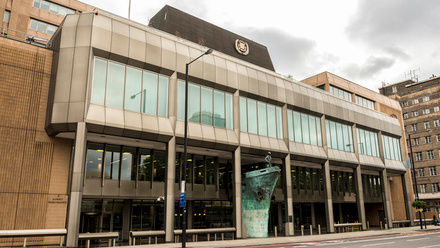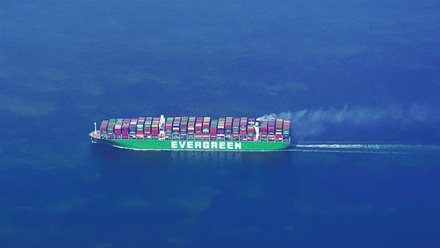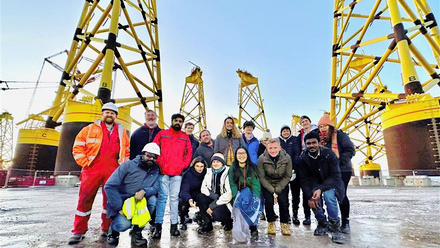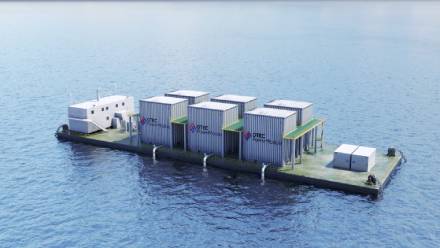Why green ports are key to shipping hitting net zero targets
When it comes to decarbonising the maritime industry, attention tends to focus on the ships, yet shore-side activities are also emitters of greenhouse gases (GHG) and air and noise pollution.
Ports are working hard to cut their carbon footprint. Belfast Harbour, for example, says it is on track to be the first net zero port operator in the UK and the island of Ireland. It cut its GHG emissions by 18% in 2023 and anticipates a further 40% reduction this year, putting it on track to reach net zero in its direct operations well ahead of a 2030 target.
This has been achieved through a range of initiatives, including new electric vehicles across its fleet, the increased use of hydrotreated vegetable oil (HVO) in its pilot boats and plant machinery, and 100% renewable electricity in its direct operations and for some tenants since 2019. For Belfast, this is part of a wider drive to stake out its claim to be a leader in offshore wind – the port is home to the UK’s first bespoke offshore wind assembly and installation terminal.
These cuts are based on the company’s Scope 1 and 2 emissions, those from its direct operations, but, says Joe O’Neill, Chief Executive of Belfast Harbour, the company is now working to find effective ways to tackle the more challenging Scope 3 emissions (from assets not owned by the organisation).
This is important because ports have a key enabling role if shipping and the wider supply chain is to meet overall net zero targets. Ship owners cannot unilaterally opt to ‘go green’ if there’s no means for their ships to refuel or recharge when in port, and they can’t make these multi-million dollar and multi-decade investments without the comfort of knowing that infrastructure is in place.
This requires a careful and often pain-staking orchestration of multiple parties in order to align objectives, technology and piece together the funding for these big projects. Serendipity also plays a part.
South coast stepping up
When Portsmouth International Port was seeking to put in place a shore power project to support its major customer Brittany Ferries, which from next year will have three new vessels with different fuel choices, including two new LNG/hybrid vessels, the timing of the previous UK government’s Zero Emissions Vessels and Infrastructure competition (ZEVI), which was announced in February 2023, was instrumental in getting the innovative project over the line.
The resulting Sea Change project will be a game changer for the port, serving not just Brittany Ferries but also other customers with hybrid or electric capabilities. The Sea Change shore power system will serve the port’s three busiest berths, allowing visiting ferry or cruise ships to turn off their engines and ‘plug-in’ so that green electricity runs their onboard systems.
“In terms of electrical engineering, it’s an absolute mission,” says Eleanor Toyer, Environmental and Sustainability Coordinator at Portsmouth International Port, adding that on top of the engineering, there’s also a wide range of smart digital tools, including a dashboard of data insights and a digital twin ecosystem that will be available so all the project partners can select and share data securely.
“The system will allow these new vessels to reach their absolute full potential,” Toyer states.
Elsewhere across the port, there are a range of enterprises underway, with the terminal building and its extension featuring world-class seawater harvesting to heat and cool the building, while wind and solar technology, and internal and external living walls, help to purify the air.
“Later this year or early next year, we expect this building will be carbon positive, or producing more energy than it consumes,” enthuses Toyer.
Solar canopies have been installed over some of the car lanes. This currently has capacity of 1.2 MW, which complimented with a battery energy storage system, already makes a meaningful dent in the site’s hefty energy bills, and there’s to scope to add another 1.5 MW of capacity, Toyer explains.
This is important because the cost of electricity, particularly in the UK, remains a barrier to further electrification. Capital costs for port electrification can be significant and the OpEx (operating) costs of electricity are a key consideration as they are typically higher than diesel/petrol, particularly in the UK. Ship owners that decide to electrify are also deciding to pay more for their propulsion than cheap and readily accessible but intensely polluting heavy fuel oil, which pits sustainability ambitions head-to-head with commercial reality.
“Every chance we get, we advocate for a marine energy tariff,” reasons Toyer.
Costs are not the only barrier to further electrification. Grid capacity and connection cost are significant hurdles, not just for ports but for many sectors seeking to electrify. Twinning with other projects, for example a fleet of electric buses that could charge when there are no vessels plugged in, can be one way to help move more quickly through the connection queue and share costs.
Still appetite for electricity
Dan Turner, founder of Apricity Sustainability Consulting Ltd who work with Aqua superPower, which provides charging stations for electric boats and is now leveraging its track record in marinas to support the commercial ports sector and the electrification of work boats and larger vessels, highlights some other barriers.
“The complexity of landownership on the coastline can lead to lengthy legal processes to agree landownership and leases,” he laments, adding there is also a knowledge gap on how to deliver vessels that are compatible with charging infrastructure. “As well as power supply, there is a requirement for communication protocols which inform the provision of power to the vessel. This is an area of learning for the sector.”
All of this adds up to making projects far more complicated and time-consuming than they need to be. The actual fitting of an Aqua charging station, for example, can take just two to three weeks but the grid connection and landownership agreements can stretch that time scale to six months. Planning outcomes for some of its larger sites, such as those being developed on the Thames, can take 12 weeks.
It’s clear, however, that despite the hurdles that range from grid connection delays to the costs of electricity, there’s a growing appetite to electrify ports to not only cut the carbon footprint but also reduce noise and air pollution.
“When we have tugboats plugged in overnight, the crew say they sleep better on the vessels than when generators are running,” concludes Toyer. “We’re an integral part of the city, with primary schools and residential housing nearby, so we really need to do everything we can to reduce pollution. It’s the right thing to do.”
Discover more about shipping’s general role in GHG emissions by joining the Ship Energy and Environment Special Interest Group.
Main image: solar panels in Portsmouth; credit: Portsmouth International Port.
Tell us what you think about this article by joining the discussion on IMarEST Connect.





